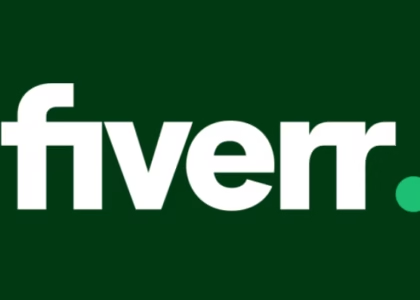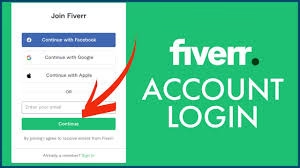PBN Links In the ever-changing world of SEO, backlinks are still king. But not just any backlinks—high-authority, relevant ones that actually move the needle. That’s where PBN links come in. Some call them black hat, others call them smart. Either way, PBNs (Private Blog Networks) continue to be one of the most talked-about strategies in SEO.
Whether you’re brand new to the world of SEO or a seasoned marketer trying to decide if PBNs are still worth it in 2025, this guide breaks it all down for you.
Understanding the Basics of PBNs
What Does PBN Stand For?
PBN stands for Private Blog Network. It’s a collection of websites that you own (or have access to) and control. These sites are usually built using expired domains that already have some authority. You then use these sites to link back to your main website—often called the “money site.”
How Private Blog Networks Work
Think of it like this: you’re building your own mini internet. Each site in your PBN links back to your money site, giving it that sweet SEO juice. The idea is to make it look like you’re getting backlinks from different authoritative sources—even though you’re the one controlling it all behind the scenes.
The Core Purpose of PBN Links
The goal of PBN links is simple: boost your search engine rankings quickly by leveraging the authority of expired domains. Instead of waiting months for guest posts or natural backlinks, you’re taking the shortcut (with some risks, of course).
History and Evolution of PBNs
The Early Days of SEO and Link Building
Back in the day, SEO was the Wild West. You could stuff your pages with keywords and spam links from any site you could get your hands on. Google caught on, of course.
The Rise of PBNs
As link building matured, SEOs started buying expired domains with strong backlink profiles. They built new sites on these domains and used them to create links to their main sites. Thus, the Private Blog Network was born.
How Google’s Algorithm Responded
Google didn’t stay asleep for long. With algorithm updates like Penguin and manual actions from their spam team, Google began cracking down hard on unnatural link schemes—including poorly built PBNs. But SEOs adapted, learned to hide their tracks better, and PBNs evolved.
How PBN Links Influence Search Rankings
Domain Authority and Link Juice
The whole strategy hinges on authority. An expired domain with a solid backlink profile passes more authority to your money site than a brand-new domain. That’s what we call “link juice,” and it can skyrocket your rankings if used right.
Relevance and Niche-Specific Linking
It’s not just about authority anymore. Google is smarter now. Links from relevant, niche-specific domains matter more than just random high-DA domains. So, if you’re in the fitness niche, your PBN sites should also talk about fitness—not real estate or finance.
Do PBNs Still Work in 2025?
Short answer: Yes, if done correctly. Long answer: It depends on how well you hide your network, the quality of your domains, and how naturally you integrate your links.
Building a Private Blog Network
Buying Expired Domains with Backlink Profiles
This is the most critical step. Look for expired domains with:
- High-quality backlinks (no spam)
- Niche relevance
- Clean history (check using Wayback Machine and Archive.org)
Pro tip: Use tools like SpamZilla, DomCop, or ExpiredDomains.net.
Setting Up Hosting for PBN Sites
You must use different IPs and hosting providers. Shared footprints are the number one reason networks get deindexed. Think of it like using different disguises for each of your spies.
- Use cheap VPS or cloud hosting
- Avoid using the same CMS themes or plugins across sites
- Don’t use the same WHOIS info
Content Creation and Link Placement
Your content must be unique, engaging, and topic-specific. No spun content. No thin articles.
Avoiding Duplicate Content
Use original content for every PBN site. Google’s algorithms are sharp at detecting duplication.
Keeping It Natural and Human
Don’t just throw in your link. Add context, support it with useful content, and make it look like a real editorial piece.
Risks and Penalties Associated with PBNs
Google’s Stance on PBNs
Google has openly declared war on unnatural links, including those from PBNs. If you’re caught, you could face:
- Deindexing of your PBN sites
- Ranking drops or complete removal of your money site
- Manual penalties
How Websites Get Penalized
Footprints. That’s the number one reason. Similar hosting, duplicate content, interlinking your PBNs, using the same Google Analytics or Search Console codes—all red flags.
Footprints to Avoid
- Using the same themes/templates
- Shared IP addresses
- Public WHOIS info
- Identical backlink patterns
Best Practices to Safely Use PBN Links
Diversifying Your Link Profile
Never rely solely on PBNs. Mix them with:
- Guest posts
- Niche edits
- Social links
- Citations
Mixing PBN Links with White Hat Links
Balance is everything. A healthy backlink profile includes a variety of link types—PBNs should only be one part of it.
Avoiding Obvious Patterns
Don’t place all your links on the homepage. Don’t always link with exact match anchors. Keep it natural. Sometimes, even no-follow links can help diversify your profile.
Case Studies: PBN Successes and Failures
A Niche Site That Skyrocketed
One affiliate marketer used a well-maintained PBN to rank a site in the kitchen gadgets niche. Within 4 months, traffic jumped from 200 visits/month to over 20,000—all thanks to high-authority PBN links.
A Business That Got Deindexed
A local business used low-quality PBNs with spun content and got hit with a manual action. Their domain lost all rankings and traffic overnight.
Lessons Learned from Real Examples
- Quality matters more than quantity
- Hide your tracks well
- Monitor and clean up bad links regularly
Tools for Managing and Analyzing PBN Links
SEO Tools to Monitor Your Network
- Ahrefs
- SEMrush
- Majestic
- Monitor Backlinks
Link Audit Tools
- Screaming Frog
- Google Search Console (for detecting manual penalties)
- Link Detox
Hosting and Content Management Tools
- Easy Blog Networks
- Bulk Buy Hosting
- WordPress with custom themes and plugins
Alternatives to PBNs
White Hat SEO Strategies
- Build naturally through value-driven content
- Leverage keyword clusters
- Use internal linking smartly
Guest Posting and Outreach
Still one of the most powerful ways to get contextual links that pass authority and trust.
Niche Edits and HARO Links
Niche edits place links into existing content. HARO links are earned by contributing expert opinions to journalists. Both are safer and more scalable.
Myths About PBNs You Should Stop Believing
“PBNs Are Dead”
Not true. Poorly built PBNs are dead. Well-hidden, high-quality PBNs still work—just not for the lazy.
“Google Catches All PBNs”
Also false. Google catches obvious networks. The well-disguised ones? They often go unnoticed.
“Only Black Hat SEOs Use Them”
That’s like saying only street racers use nitrous. Even big brands dabble—they just don’t advertise it.
Legal and Ethical Considerations
Is It Ethical to Use PBNs?
It depends on your moral compass. Some see it as manipulation, others as smart strategy. Google frowns on it, but it’s not illegal.
Can You Get Sued for PBN Use?
Unlikely—unless you’re outright stealing content or infringing trademarks. But always tread carefully.
Future of PBNs in SEO
AI and the Future of Link Detection
AI is getting better at spotting spammy links. But it’s also helping SEOs build better content and smarter, safer PBNs.
Are PBNs Sustainable in the Long Term?
Only if you evolve with the times. If you’re building static, low-effort sites, you’ll eventually get caught. If you’re building real-looking, content-rich websites, you’re playing a longer game.
Should You Use PBN Links for Your Website?
Pros and Cons Recap
Pros:
- Quick results
- Full control over links
- Can be cost-effective long-term
Cons:
- Risk of penalties
- Time-consuming setup
- Not future-proof without effort
Situations Where PBNs Might Be Useful
- Testing niches quickly
- Ranking churn-and-burn affiliate sites
- Supplementing other link-building efforts
Conclusion: Making the Right Link Building Choices
PBN links are like dynamite. In the right hands, they build empires. In the wrong hands, they blow everything up.
If you’re thinking about using PBNs, know the risks, do it right, and never rely on just one tactic. Combine it with smart SEO, great content, and a long-term vision. That’s how you win in 2025 and beyond.
FAQs
1. Are PBNs illegal?
No, they aren’t illegal—but they do violate Google’s guidelines. That means you can get penalized, not arrested.
2. How many PBN links should I use?
There’s no magic number. Start small, mix them into your link profile, and always test before going all-in.
3. Can I buy PBN links from Fiverr or other platforms?
Be cautious. Most of those are low-quality spam farms. If you buy, vet the seller thoroughly.
4. How do I know if a link is from a PBN?
Look for patterns: same hosting, low content quality, generic design, no real branding. Tools like Ahrefs can help analyze backlink sources.
5. Can PBN links help new websites rank?
Yes, but it’s risky. It’s better to build some authority first through white hat methods, then experiment with PBNs.






